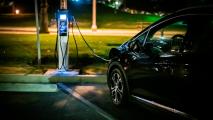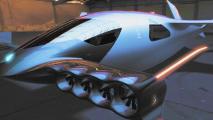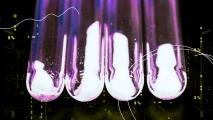China’s experimental thorium reactor is ready for testing
China has finished construction on an experimental thorium reactor that could greatly expand the number of people who can benefit from clean nuclear energy.
Fission basics: Nuclear power plants split atoms of fuel through a process called “fission.” This produces energy that can then be converted into electricity.
Nuclear power is more reliable than wind and solar, and the fission process doesn’t produce any climate-harming carbon emissions, making nuclear energy a potentially key weapon in the battle against climate change.
The challenge: Today, there are more than 400 nuclear power plants in operation across the globe, and the vast majority use uranium as a fuel and water to cool and moderate the fission process — but there are downsides to the status quo.
While uranium is about as common as tin, less than 1% of mined uranium is a specific kind that can undergo fission (uranium-235) — a process called “enrichment” is needed to increase uranium-235 levels in the mined metal, and it’s both complicated and expensive.
Thorium is more common than uranium, and its waste is less toxic and harder to weaponize.
After fission, uranium leaves behind a waste product that’s highly radioactive, meaning it must be carefully stored and handled. Also included in that waste is a type of plutonium that can be used to make nuclear weapons.
The need for water, meanwhile, means nuclear plants are usually only built in areas with an abundant supply, such as those with lakes, rivers, and coastlines, leaving the rest of the world to rely on other (potentially not-so-clean) sources of energy.
The alternatives: Uranium-fueled and water-cooled reactors might be the most common types, but there are others options with their own pros and cons.
The radioactive metal thorium can be used as a nuclear fuel. It’s more common than uranium, and its waste after fission is less toxic and harder to weaponize.
“For now, there is enough uranium to fuel all operating reactors,” nuclear reactor specialist Sylvain David told France 24. “But if the number of reactors increases, we could reach a situation where supply would no longer keep up, and using thorium can drastically reduce the need for uranium.”
China already has plans to build a commercial version of the plant by 2030.
However, thorium is more radioactive than uranium in the short term, so working with a thorium reactor is more precarious. Thorium also doesn’t work as well as uranium in certain types of reactors.
Molten salt — salt heated to temperatures at which it becomes liquid — is a viable alternative to water for cooling and moderating the fission process within a reactor.
In addition to expanding location options, molten-salt reactors are also more efficient and safer — but molten salt can corrode pipes, and experimental molten-salt reactors have been prone to technical problems.
China’s thorium reactor: Despite decades of research, scientists have never been able to overcome these shortcomings. But now, China is gearing up to test a first-of-its-kind molten-salt reactor fueled by thorium.
China built the thorium reactor in the Gobi Desert near the city of Wuwei in August, and now that construction has wrapped, it expects to begin testing the device before the end of September.
If the prototype works as hoped, China already has plans to build a commercial version of the plant by 2030. While the current thorium reactor could only generate enough electricity for fewer than 1,000 homes, that one would be able to power 100,000.
China doesn’t plan to stop there, either. It envisions building the reactors across the country — potentially cleaning up air pollution and bringing clean energy to people living in its deserts and plains.
We’d love to hear from you! If you have a comment about this article or if you have a tip for a future Freethink story, please email us at [email protected].





